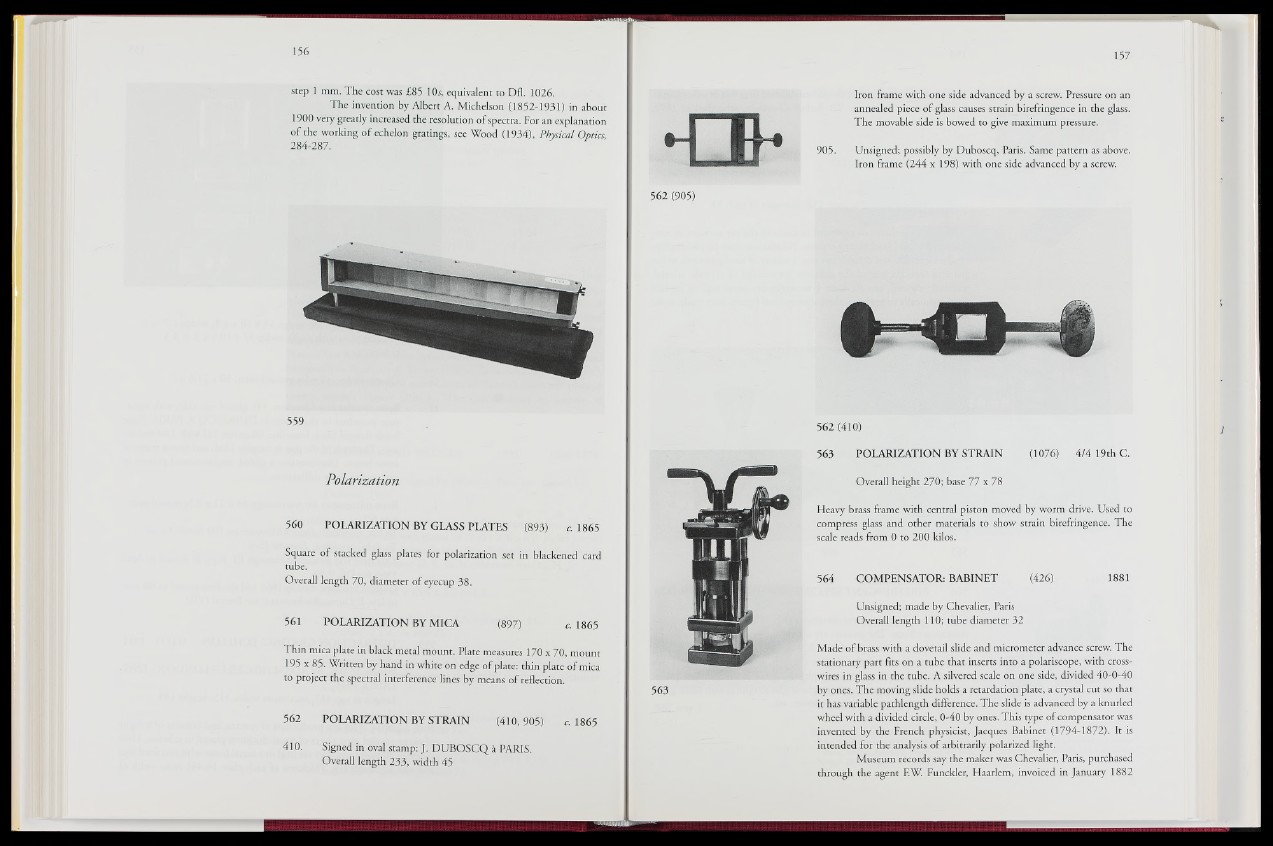
step 1 mm. The cost was £85 10s, equivalent to Dfl. 1026.
The invention by Albert A. Michelson (1852-1931) in about
1900 very greatly increased the resolution of spectra. For an explanation
of the working of echelon gratings, see Wood (1934), Physical Optics,
284-287.
559
Polarization
560 POLARIZATION BY GLASS PLATES -(893) c. 1865
Square of stacked glass plates for polarization set in blackened card
tube.
Overall length 70, diameter of eyecup 38.
561 POLARIZATION BY MICA (897) c. 1865
Thin mica plate in black metal mount. Plate measures 170 x 70, mount
195 x 85. Written by hand in white on edge of plate: thin plate of mica
to project the spectral interference lines by means of reflection.
562 POLARIZATION BY STRAIN (410,905) c. 1865
410. Signed in oval stamp: J. DUBOSCQ a PARIS.
Overall length 233, width 45
-C B *
562 (905)
563
Iron frame with one side advanced by a screw. Pressure on an
annealed piece of glass causes strain birefringence in the glass.
The movable side is bowed to give maximum pressure.
905- Unsigned; possibly by Duboscq, Paris. Same pattern as above.
Iron frame (244 x 198) with one side advanced by a screw.
562t4l0)
563 POLARIZATION BY STRAIN (1076) 4/4 19th C.
Overall height 270; base 77 x 78
Heavy brass frame with central piston moved by worm drive. Used to
compress glass and other materials to show strain birefringence. The
scale reads from 0 to 200 kilos.
564 COMPENSATOR: BABINET (426) 1881
Unsigned; made by Chevalier, Paris
Overall length 110; tube diameter 32
Made of brass with a dovetail slide and micrometer advance screw. The
stationary part fits on a tube that inserts into a polariscope, with crosswires
in glass in the tube. A silvered scale on one side, divided 40-0-40
by ones. The moving slide holds a retardation plate, a crystal cut so that
it has variable pathlength difference. The slide is advanced by a knurled
wheel with a divided circle, 0-40 by ones. This type of compensator was
invented by the French physicist, Jacques Babinet (1794-1872). It is
intended for the analysis of arbitrarily polarized light.
Museum records say the maker was Chevalier, Paris, purchased
through the agent F.W Funckler, Haarlem, invoiced in January 1882